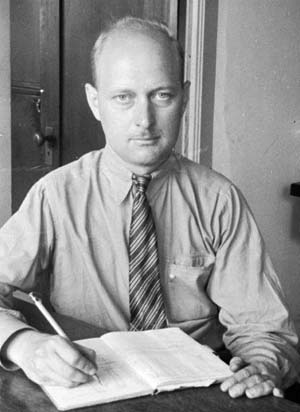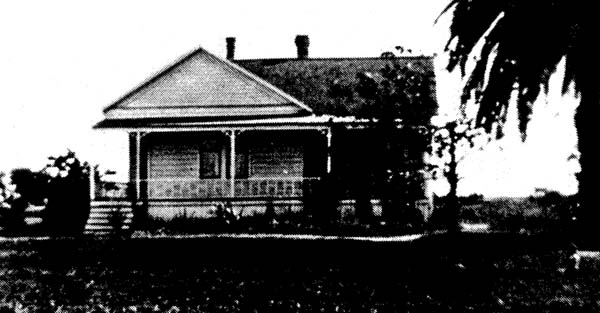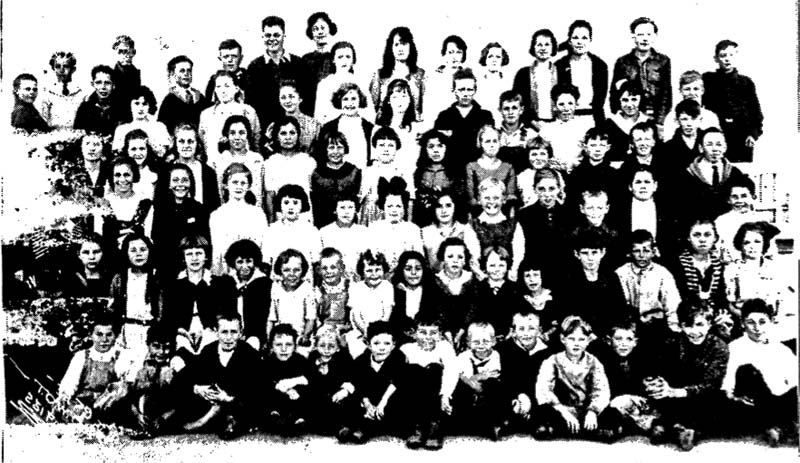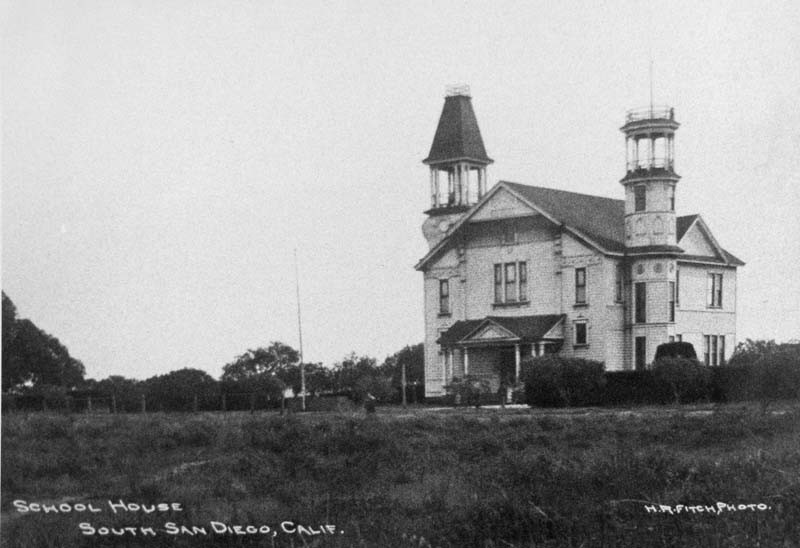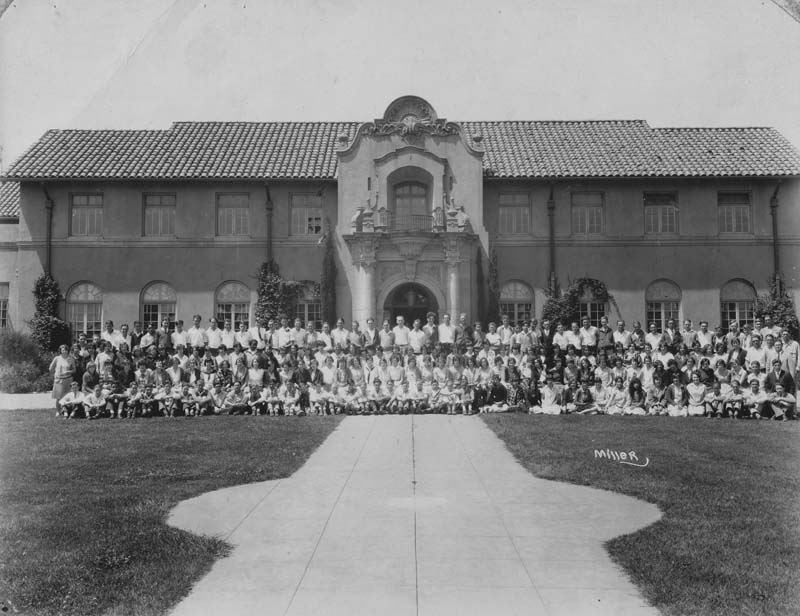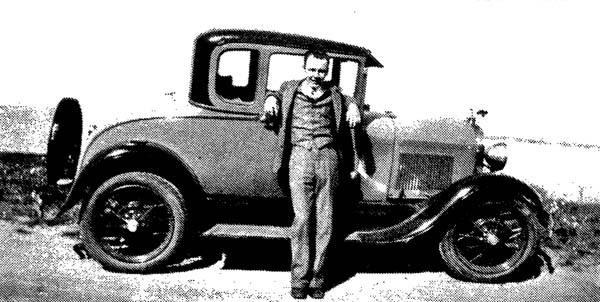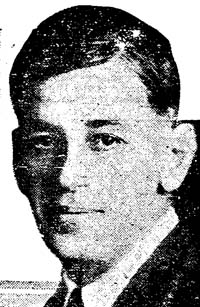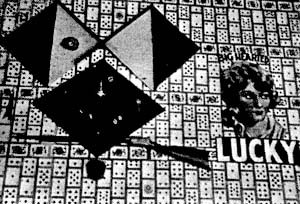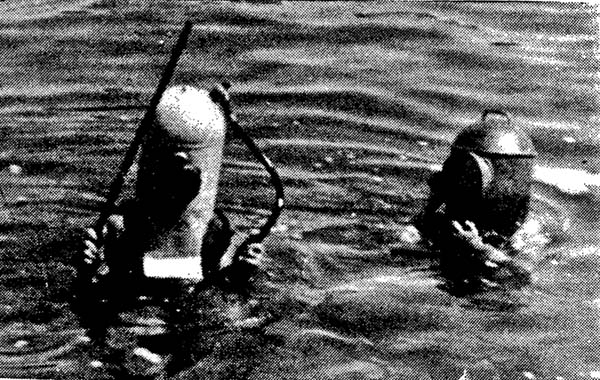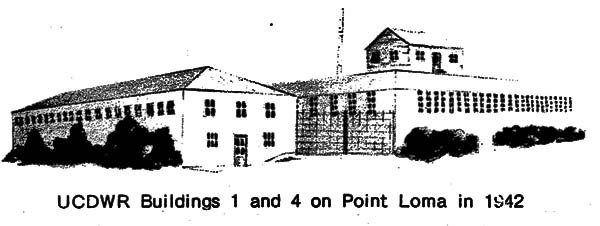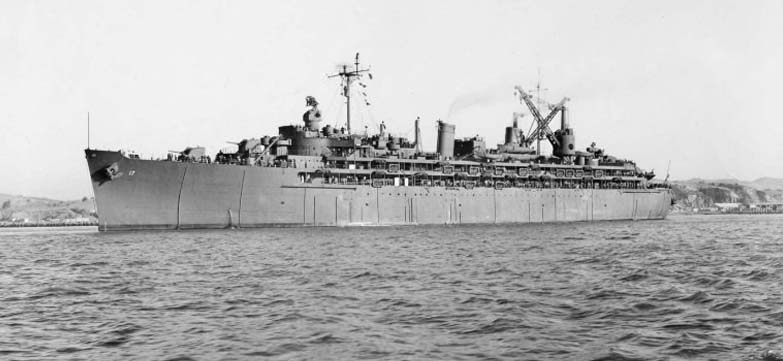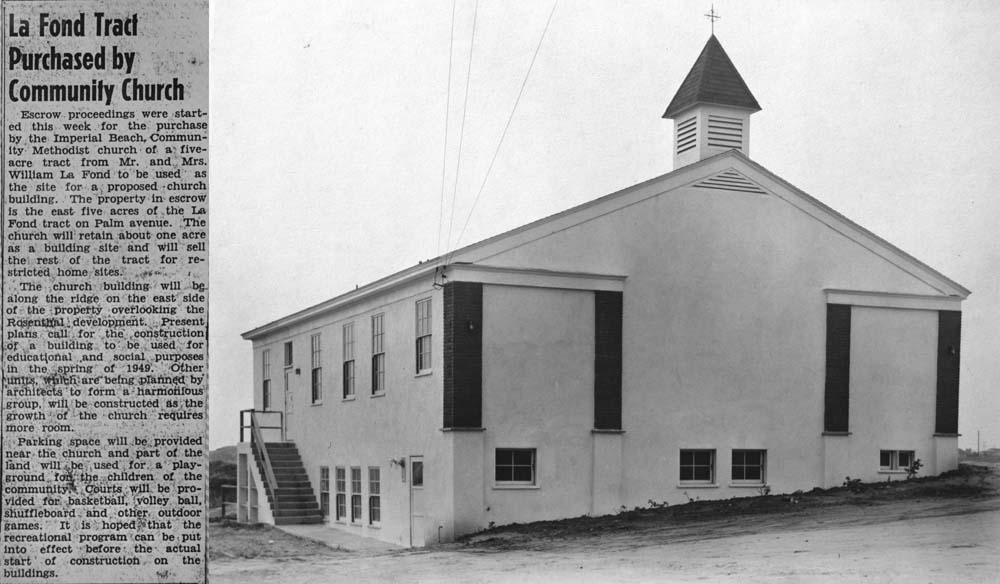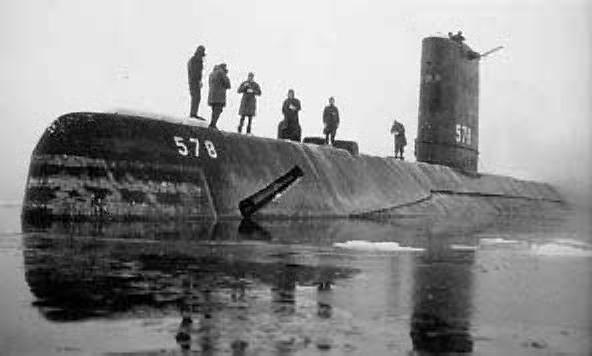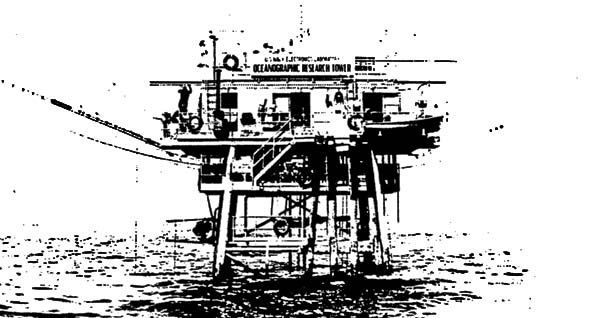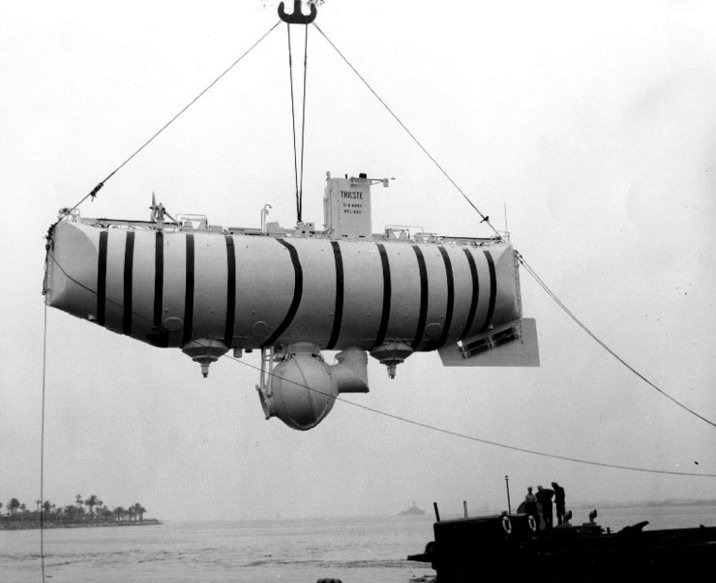|
Imperial Beach Scientist Eugene LaFond
Eugene LaFond ca. 1935
(photo from Special Collections & Archives, UC San Diego, La Jolla) Eugene Cecil LaFond was born December 4, 1909 in Bridgeport, Washington. His grandparents, Gotfried and Mary LaFond, and his parents William and Bessie LaFond, and his aunt Evangelen La Fond who married Carl Hall, moved to California in 1917, eventually settling in Imperial Beach by 1921. William bought 10 acres of land on Palm Ave, using part of the land for a trailer court that opened in 1941. He was sheriff of Palm City in the 1930s and a member of the Imperial Beach Fire Department. The LaFonds sold five acres of their land to the Methodist Community Church in 1948. After the death of his father William in 1950, his mother Bessie moved to 284 Church avenue in Chula Vista, and in 1965 moved into Asbury Towers at Fredericka Manor in Chula Vista. She died in 1970. Eugene LaFond attended South Bay Union Grammar School, Sweetwater High School, and San Diego State University before taking a job at Scripps Institute in 1933. The first 40 pages of his autobiography, Bill and Bob, Where Did You Come From?, describe growing up in Imperial Beach. The chronology below has excerpts from this autobiography, and his scientific achievements from 1933 until his death in 2002. "Eugene LaFond was born in eastern Washington of French-Canadian extraction. He was inspired by his grandfather, Godfrey LaFond, who panned for gold in Alaska under trying circumstances, and worked for many years as a fisherman on the high seas. His father continued the maritime tradition, and once sailed to Japan and China." (Shoemaker, 2007) "In 1921 we moved to Imperial Beach for a six month period and bought a 10 acre ranch to set up my grandparents in the chicken business. I was enthralled with the ranch the numerous wild squirrels and birds, and especially the nearby beach. The sand, shells, seaweed and breaking waves were new and interesting. I attended the 6th grade in the South Bay Union School, located half way between Imperial Beach and Palm City, and was reluctant to return to the Bay region." His father took a job with the Southern Pacific Railroad and in 1923 the family moved to Berkeley for six months. (Lafond, 1992)
Imperial Beach house in 1922. (Lafond, 1992)
1923 - "My grandfather was having trouble with the chicken ranch and thus my father quit his job and we all moved to Imperial Beach. I throughly enjoyed my boyhood growing up on the farm. I ran barefoot during the summers in bibbed overalls. I did have some light chores but it was mostly play. I sometime helped with the chickens, feeding them a mixture of grains (corn, wheat and milomaize) and a mash of ground grains. Other chores included cutting up alfalfa and kale, grinding shells, cleaning the chicken houses, gathering eggs. cleaning those that needed it with steelwool, candling them and packing them in 30-dozen crates. I helped shock barley hay which grew well during rainy years, but poorly in other years. When we raised celery, I folded newspapers, sewed them in loops and wrapped the growing plants to bleach the stocks, for only bleached celery was acceptable at that time. We had a manual washing machine which agitated the clothes by a push-pull handle. It was my chore once a week to help operate the washer and hand wringer. But most of my boyhood was devoted to playing climbing the very large cypress hedge around the house, making 3-stick kites, swimming, trapping squirrels and dozens of other things, including harassing my sister. My parents were very social and would often take Lois and myself to beach parties, to Tent City recreational area just south of the Coronado Hotel, and even all the way to Mission Beach where we rollerskated in the indoor rink." (Lafond, 1992) "When a Boy Scout troop was formed in Palm City joined and was appointed patrol leader, with my close friend, Raymond Johnson, as the other patrol leader. We held meetings in a church in Palm City and went on hikes around the area in addition to the 2 miles to Palm City from Imperial Beach. Raymond and I occasionally attended scout meetings in San Diego to receive merit badges. We eventually became eagle scouts and I became a member of a San Diego eagle scout troop which represented the city at a jamboree in Pasadena. Later when a Boy Scout troop was formed in Chula Vista, I became the senior patrol leader. Still later when a troop was formed in San Ysidro, I became its first scoutmaster." (Lafond, 1992) 1928 - "My hunting activity was further enhanced when I was 19 years old and acquired a 12 gauge shotgun as a Christmas present from the Beyer family. In winter, ducks frequented the south end of San Diego Bay, Tia Juana Slough and even in a pond adjacent to our 10 acres. The gun was also used to kill rabbits, especially in the Tia Juana and Otay Valleys. My uncle's wife, Nora lmes, would drive their big Buick. My uncle Harold would sit on one fender and I would be on the other, and as rabbits scampered across the road one of us would pick them off. " (Lafond, 1992)
South Bay Union School student body, 1924. Eugene is at upper right. (Lafond, 1992)
"What enjoyed most was exploring the waters and salt ponds in the southern part of San Diego Bay, the Tia Juana Sloughs and especially the beach. I learned to swim in the muddy salt ponds near a raiIroad trestle where the muddy water was deeper. My grandfather built me a shallow draft boat only 6 inches high and 12 feet long. This was used, with Raymond, in meandering the channels of the salt ponds to explore and catch mud suckers with bent pin hooks and line. Later I acquired an old rowboat and duck boat, both of which required considerable refurbishing. Although my mother made me a sail from unbleached muslin, given to me by Mrs. Babcock, it did not provide more mobiIity since the the boat lacked a keel and adequate rudder, and the channels were so winding. We did venture out in the southern end of the Bay and as far as the hog ranch (now Coronado Cays) where garbage and trash from Coronado were dumped. Here we acquired discarded baby buggy wheels which we used to construct a cart to transport the boats to and from the water." (Lafond, 1992) "The Tia Juana Slough, then uninhabited, was even more interesting. We discovered the location of cockle beds, sanddollar concentrations, nests of, sea birds, shark eggs, and dozens of interesting phenomena. On the open beach were an abundance of sea shells. Large conch shells were gathered for decorations to line flower beds. The small donax shells would accumulate on the beach in patches 1 to 2 inches thick. These would be raked up in piles and shoveled into the wagon. Some were ground up for chicken grit and others were used to make a white but noisy covering for the driveway to our house." (Lafond, 1992) "A most exciting activity was catching grunion. Raymond and I would run the dark deserted beach from Imperial Beach to the Tia Juana River confluence in the middle of the night and catch grunion by hand. It was nearly always easy to fill 2 gunny sacks, all we could carry, at high tide on every 2nd, 3rd and 4th night after full and new moon. In later years, when others discovered grunion, sieves were used to strain the backwash of the waves, but this removed the ''thriII" from the sport. This method was subsiquently outlawed. Another exciting activity was surfing the breakers with a small 1-inch thick and 16 inches wide redwood board, and swimming long distances out into the ocean in summer." (Lafond, 1992)
South Bay Union School 1918
1924 - "The South Bay Union School where I attended the 7th and 8th grades consisted of 3 rooms. First, 2nd and 3rd grades were in one room, with the 4th, 5th and 6th in an other ground floor room. The 7th and 8th were on the second floor. The students, some of whom were of Mexican descent, were bussed from Palm City, Nestor and Momument. My teachers were Mrs. Pingree and later Mr. Browning. The latter had several children, a criterion for selection, since the school district needed more pupils in order to obtain more school funds. Teaching ability was secondary. The main objective of the students was to have fun rather than learn. Mr. Browning was far from pleased when I changed one letter in the large school sign, by painting the U in Union to 0, making it Onion. But eventually we graduated from the 8th grade in 1924. Raymond was valedictorian and I was salutatorian, and we each gave a short speech." (Lafond, 1992)
Sweetwater High School 1929
"The only high school south of San Diego was the Sweetwater Union High School in National City. To get there it was necessary to walk the 2 miles to Palm City and catch the school bus that started in San Ysidro. Frequently my father would drive me to Palm City. The bus ride was fraught with rough play. Later the bus came part way and eventually to Imperial Beach in my senior year. My high school career was not notable. The required courses were easily completed without taking any books home to study. There were a few optional courses. We could choose a language -my choice was Spanish, and for science it was chemistry. All math courses offered were taken, which placed me in good standing for college. For one semester I operated the small school store, dispensing supplies such as paper and penciIs. Although I did not participate in athletics, the enthusiastic competative games between county high schools were most enjoyable. I did act a small part in a school play. I made the honor role one year and finished in the upper 25th percentile of the 83 graduates. In the Senior Edition of the SUHS News, dated May 29, 1928, the 83 senior class students are listed and the English teacher, Mrs. Barnes, who knew us all, predicted what each of us would do after graduation. She listed me as becoming a "chicken farmer". However, she gave me the responsibiIity of taking the manuscript to the printer in Raymond Johnson's car. Chicken farmer did not enthrall me, so I changed it enroute to the printer, without telling anyone, to "State College", which then appeared in the newspaper. (Lafond, 1992) Both my father and grandfather, as well as the marine environment, instilled a love for boats, but the event that developed my familiarity with the sea was the purchase of a saiIboat in 1926. It occured unexpectedly, like so many things in life. Towards the. end of my sophmore year in high school, a graduating senior, Jack Johns, had an old saiIboat which he had to dispose of before going away to college that summer. Raymond and I inspected the dilapidated craft cradled on the bay side at the foot of 14th Street in National City. It was love at first sight and we eagerly bought the 21foot sloop for $26 (13 each). The sum nearly.clearied out our life-long savings but was the first "substantial" property that I had ever owned, or half owned. (Lafond, 1992) 1927/08/21 - Many from San Ysidro were among the guests at the party given by Mr. and Mrs. William LaFond at their home at Imperial Beach on Saturday evening, in honor of Mr. and Mrs. G. N. LaFond, who celebrated their 50th wedding anniversary. Attending were Miss Lois and Eugene LaFond and Mrs. Wm. LaFond of Imperial Beach. ("San Ysidro Notes," San Diego Union, Aug. 21, 1927)
Ed MacGregor stands in front of Eugene's car, a 1925 Ford, in 1930 (Lafond, 1992)
1928/06/15 - "High school days came to an end with graduation in the Sweetwater High School Auditorium on 15 June 1928. I made many lasting school friends, and at our 50th class reunion in 1978, which about 50 attended, I acted as master of ceremonies. Succeeding annual reunions, which I helped organize, kept me in touch with many members of the classes of 1928, 1927 and 1929. Of the 83 Sweetwater graduates only a few went to San Diego State College, the only college in the area, then located on Park Boulevard at El Cajon Boulevard. It was very expensive for my family to purchase a car for me to commute to State from Imperial Beach. They first bought a model T Ford, followed a couple years later by a 1925 model A Ford coupe with a rumble seat." (Lafond, 1992) Special honors highlighted Sweetwater's class of 1928. The clock seemed in have turned backwards as 14 of the 20 remaining graduates from Sweetwater Union High School's class of 1929 were joined earlier this month by alumni from the classes of 1924, 1925, 1926, 1927, 1928, 1930 and 1931. That original class of 60 years ago had a roll call of 80. Eugene LaFond, class of 1928, was chairman for what has become an annual event for the classes of 1927-29. Kathryn Van Deripe Simpson, a 1929 graduate, was the official hostess. Simpson, along with classmate Harlan Skinner, spent their careers working at Sweetwater Union High School. Annetta James from the 1927 class, is retired from the National School District. Two retirees from the Sweetwater district office are Doris Ramstrick Dokey, 1930, and Virginia Roll Lopez, 1928. High school sweethearts at the reunion who had married after graduation were Harlan Skinner, 1929 and Kathryn Dimmock, 1933; Raymond Knight, 1924, and Myrtle Jessup, I928; Edward Loustalet, 1929, and Maxine Cords, 1933. The graduates and guests were enteriained by the jazz ensemble stage band from National City Junior High School, under the direction of C. Edward Reid. Tunes of years past blended in with the air of nostalgia that prevailed over the Bonita Golf Club on May 3. (The Chula Vista Star-News, May 17, 1989, Page 19) Class of '28 continues strong ties. This year Sweetwater High School's class of 1928 celebrated their 66th reunion with a special pride of their association with the school because they have been able to re-cause they have been able to reestablish their class relationship since the 50th year reunion was held in 1978. The reunion May 4 was held at the Bonita Golf Club and included a lunch for six of the class members, of which there were originally 83 members. The class members got together and "talked about more modern things." Nettie Phelps, 83, said, "(School in 1928 was) like going to a picnic. We were very proud of ourselves. We always dressed nicely and made our own clothes. It was kind of bad times. Nobody had any money, so we just got along like we could. People really went there to learn not like kids do these days. Some of the kids went to college, most of them went to work." Phelps was able to provide updates on the classmates who attended: * Ramon Barbarino, now of Los Angeles, was the athlete of the class. His team won both football and baseball high school conference championships. He operated a bar and restaurant and became a steward for American Airlines. He now plays golf several times a week. * Nettie (Morefield) Phelps has resided in National City since 1911. She also attended 16th Street School and Central School. She was a secretary for the Richard and Bowman Ford Agency in National City. She married and traveled with her husband surveying Borrego Valley, Camp Pendleton and Oregon. She raised her family and came back to National City. * Charles Maurer, now of Escondido, became a chemist and established a prosperous company that manufactures soap, cosmetics and products sold in health food stores. The company is named Sierra Dawn and is operated by his son while Charles plays golf at Lawrence Welk's Retirement Park. * Eugene LaFond, now of San Diego, is a physical oceanographer who worked in the Artic and Indian Oceans, United Sec Gen International Association for Physical Sciences of the ocean, U.N.E.S.O. in Paris. (The Chula Vista Star-News, May 21, 1994, Page 20.)
1932 - Jimmie Zurcher, owner of the Rexall Drug Store in Chula Vista, married Lois B. LaFond. 1932/06 - "Eventually, in June 1932, I graduated with a chemistry major and a math minor, being the first LaFond or lmes to have an opportunity to graduate from college. The graduation ceremony was a cap and gown affair and 1 was persuaded to wear garters for the first time. Unfortunately one became unhooked and dragged along the stage as I received my diploma. Graduating was one thing but getting a job was another. In 1932, in the depth of the economic depression, it was especially difficult. I repeatedly tried to obtain employment in numerous organizations. My best bet seemed to be to seek work as a service station attendant so I applied in person to all the oiI companies in the area. I went to the Standard OiI Company 18 times without success. I finally rented and operated a service station at Imperial Beach which had been closed for years. It was actually part of a restaurant complex which was not open. The rent was $15 per month. The station had only one gas pump, but no electricity, no water, no air pump and no restrooms. A fully operating gas station across the road had nearly all the local business. I did, nevertheless, get a few customers, and by buying Richfield gas at 14¢ per gallon and selling it at 18¢ paid the rent and made a slight profit. The gas business was supplimented by selling mussels for fish bait. I would go to Mexico every second or third niQht after closinq the station and bring back 2 or 3 sacks of mussels. Ed MacGregor would usually go with me and we would split the profit, if any. Initially, we would go to a rocky headland about 2 miles south of Rosarita Beach, sleep on the cliffs, then in the night when the tide was low, go down on the rocks with a flasnlight and scrape off the large mussels with a sharpened automobile sprinq leaf. Later we found a closer source for mussels a few miles north of Rosarita (now called Malibu Beach). It was a small island just beyond the surf and only accessible at low tide." (Lafond, 1992) 1932/07/27 - La Fond Holds Three Burglars. As they were leaving the roadside stand owned by Mr. and Mrs. Wm. LaFond, with their loot, three burglars were captured by Eugene LaFond, 24, son of the proprietor, last Saturday evening. An alarm system which had recently been installed sounded a bell in the house, some distance from the store, less than five minutes after Mr. and Mrs. LaFond drove away. Young LaFond ran to the store with a gun and as they came put, forced the three to hold up their hands. They were held until Deputies Wayne Macy and Blake Mason could get there to take them to jail. The men gave their names as Harry Brodfuchren, 25, truck driver and Charles H. Williams, 24, and Frank C. Monahan, 26, soldiers stationed at Rockwell Field. (San Ysidro Border Press, July 27, 1932) 1933/09/13- "At this time, September 1933, Katherine suggested that I go to Scripps Institution of Oceanography in La Jolla and apply for employment. She had, in the previous May, obtained a job chemically analyzing sea water at the Institute. I went to Scripps on 13 September,which proved to be the turning point in my Iife. . . . When initially went to work at Scripps as a volunteer, I lived at Imperial Beach. My main expense was driving the 30 miles each way. In a few weeks after Dr. Vaughan was able to obtain funds for me from the National Academy of Sciences, I moved to San Diego and rented a room on First Avenue near Katherine's home, on the corner of First and Washington Streets. After a couple of months I moved closer to Scripps to a rented room in Pacific Beach on Hornblend Street." (Lafond, 1992)
Eugene diving with helmets in Tijuana River ca. 1933. (Lafond, 1992)
1933 - "Since its inception the Institute had accumulated a variety of obsolete oceanographic equipment. Some were displayed in the museum. One piece of equipment was an old diving helmet, hose and air pump. It was constructed of heavy brass and made stiII heavier by 4 lead weights which hooked on the chest and back plate. This gear intrigued me so I took it to the bluff near the La Jolla cove, finally got it on and entered the water. Ursel Armstrong operated the hand pump which supplied the air through a long sturdy hose. The surge in shallow water made it difficult to stand up with all that weight on my shoulders, but in deep water it operated well. The myriad of colored fish and other sea life were overwhelming. I could not get enough viewing of these fascinating plants and animals. The first dive was interrupted by the lack of air. Either the hose kinked or Ursel stopped pumping. The gear was slipped off and I swam to the surface. This pre-aqualung diving suit captivated me and I used it repeatedly off La Jolla and at the mouth of the Tia Juana River." (Lafond, 1992) 1935/09/04 - "Katherine and I had secretly been married on 4 September 1935, in Steamboat Springs, Colorado, but did not announce it because university regulations prevented two people in the same family from working in the same department." (Lafond, 1992) 1936/08/01- Katherine Gehring LaFond resigned from Scripps on August 1, 1936 in order to accompany her husband to Berkeley, and they finally made their marriage public. The LaFonds had two sons. (Day, 2003) 1936/01/24 - Wedding Anniversary! Lafonds Honored. Mr. and Mrs. Jay Swinehart entertained a number of friends at their home on San Ysidro boulevard recently honoring Mr. and Mrs. William LaFond of Imperial Beach on their 27th wedding anniversary. Those attending the party were Mr. and Mrs. LaFond, Mrs. Eva Imes, Mr. and Mrs. Bob Smith and son Stanley, Mr. and Mrs. Sidney Weir and daughter, Catherine, Mr. and Mrs. Cy Buehrer, Mr. and Mrs. Ray Morse, Joseph Berry, the host and hostess and son Frank. A potluck dinner was served including club steak, pumpkin pie with whipped cream and many other hot dishes. After the dinner the evening was spent playing bridge. High score went to Mrs. Eva Imes of Imperial Beach, Mr. and Mrs. Claude Cooper of San Diego and Mrs. Lloyd Cooper of Imperial Beach. (San Ysidro Border Press, Jan. 24, 1936) 1940 - LaFond was promoted to the rank of oceanographer at Scripps in 1940. (Hardy, 2002) "In 1940 war seemed inevitable. At that time the scientific preparedness of the U.S., especially for subsurface warefare, was studied by a Committee of the National Academy of Sciences, with its findings being subsiquently turned over to the Navy Department. As a result, the Chief of the Bureau of Ships requested Dr. Vannevar Bush, Chairman of the National Defense Research Committee (NCRD), to take the necessary steps to impliment the recommendations. This resulted in the establishment of two research laboratories; one at the U. S. Navy Underwater Sound Laboratory in New London, Connecticut, and the other at the U. S. Navy Radio and Sound Laboratory on Point Lorna in San Diego, California. Dr. V. 0. Knudsen, then Dean of the Graduate School of the University of California at Los Angeles, was appointed to get the project going and eventually he became the first Director. Thus, the University of California Division of War Research (UCDWR) was created to conduct research and development, principally in submarine research." (Lafond, 1992)
1941 - "On 1 July 1941, Dr. Sverdrup moved a small group of Scripps oceanographers to UCDWR. The members of the newly created Oceanographic Studies Group were Dr. Fleming, Richard Tibby (graduate student), and Mrs. Bonnie Groves (statistical clerk). I remained at Scripps one month longer to finish some final drawings for "The Oceans", and reported at Point Lorna on 1 August 1941. We 5 constituted the original oceanographic group at UCDWR, the Laboratory which developed into the Navy Electronics Laboratory." (Lafond, 1992) 1941/08/01 - On August 1, 1941, the eve of World War II, Gene was given a leave of absence from Scripps to undertake war work at Point Loma in a laboratory later named the University of California Division of War Research (UCDWR) studying sedimentary properties and underwater acoustics of fundamental application to naval warfare. While at UCDWR he advanced to a position as Associate Oceanographer. Following the war, UCDWR was disbanded, but a few of the contracts formed the nucleus of the emergent Marine Physical Lab (MPL) of Scripps. LaFond returned to Scripps in 1945. (Hardy, 2002) 1942 - LaFond prepared the charts and illustrations for Sverdrup, Johnson and Fleming's "The Oceans: their Physics, Chemistry, and General Biology," the first modern textbook in oceanography. Published in 1942, it was immediately classified to prevent it from falling into enemy hands during World War II. The book changed the approach to graduate education in oceanography at Scripps. In time, Scripps graduates used the text to begin graduate programs or research departments in oceanography at 19 other universities in the United States and around the world. (Hardy, 2002)
The second test explosion at Operation Crossroads was underwater.
1946 - He was one of many scientific consultants who participated in Operation Crossroads, the atomic bomb tests at Bikini Atoll in the central Pacific on July 1 and July 25, 1946. He later wrote about the first explosion: "As the bomb went off high in the air, I could clearly see the extremely bright flash which went through my arm, even while standing behind the winch which towered over my head, and all at a distance of 60 miles away. This exploding bomb was most awesome and impressive,to say the least, and left an unforgettable imprint on my mind. How could anything be so bright?" Referring to the second explosion detonated underwater, he wrote,"It was a fantastic sight, this massive column of water 2000 feet in diameter and 5000 feet high moving upward with a couple of the 100 naval vessels airborne in white water. Atomic bombs are more awesome than I could ever believe." Between the two atomic tests, Gene and John Lyman lowered water samplers to various depths. The wire angle of the cast revealed a strong westerly current. They recorded the observation. The massive water flow was later described and named the "Cromwell Current." (Hardy, 2002, and Lafond, 1992) 1947 - LaFond returned to SIO at the end of the war, but moved to the Naval Electronics Laboratory in 1947 and headed the Marine Environment Division. LaFond took a number of leaves of absence from NEL over the years to take advantage of research opportunities. (Day, 2003) 1947 - From 1947 to 1951 LaFond directed scientific operations aboard submarines and icebreakers during five cruises to the northern Aleutian platform and Beaufort Sea. (Day, 2003)
USS Nereus in 1945
1947 - "The Laboratory was assigned the problem of investigating the Antarctic and Arctic Oceans for submarine operations. In connection with the Arctic phase of the program we were informed that Submarine Squadron 1. was taking the 30,000 ton submarine tender NEREUS and 4 submarines to the Bering and Chukchi Seas. We departed Pearl Harbor 15 July 1947 on the USS NEREUS accompanied by the 4 submarines and headed north for the Aleutian Islands, arriving at the cold, wet and muddy navy base at Adak on 22 July and and explored the Island near the base. After a stop in Kodiak where we witnessed salmon running up stream to spawn, we proceeded to our last stop in Juneau. Our charts of the region showed not only the deep channels but the type of bottom sediment. Thus ended the first major expedition in which I was in charge and the data from which produced several scientific papers." (Lafond, 1992)
The sale of the LaFond land to the church is announced in the newspaper article of Apr. 1, 1948. The new Methodist Community Church building was constructed by 1949.
(photo courtesy of the Imperial Beach United Methodist Church) 1948 - Methodists to Plan Imperial Beach Church. The Imperial Beach Community Methodist church has purchased five acres of the William LaFond homestead on Palm avenue and plan new church buildings for that area. The ultimate plant will contain the church proper, a parson, age, a building devoted to the activities of the youth of tlje church and outside recreational facilities such as basketball, volley ball and tennis courts and a baseball field. (The Chula Vista Star, Apr 1, 1948, Page 1.) 1951 - "I enjoyed diving and used borrowed hard hat gear when at Scripps in 1933 and skin diving at Bikini in 1947. Then in 1951, when Jacques Cousteau developed the aqualung, NEL became involved in underwater diving operations. Bob Dill was quick to realize the potential value of scuba to marine science. He and John Beagles set up a diving locker and even a decompression tank. I trained in the La Jolla Beach and Tennis Club's pool and became one of the first to qualify as a scuba diver. My first ocean dive for NEL was in the head of Scripps Canyon." (Lafond, 1992) 1952 - Perhaps Gene LaFond's greatest contribution is being the undisputed father of India's oceanographic program. His legacy stems from his work during three extended visits to India under a U.S Fulbright Grant during 1952-53, and again in 1955-56, by express invitation of the Indian government. His wife Katherine recalls they were also invited to New Zealand, but they choose India because "they didn't know much about their culture." As a visiting professor at Andhra University he lectured on modern concepts and equipment to students and faculty, gave public lectures, assembled and improvised sampling gear, and made short research and teaching cruises in the Bay of Bengal (19 trips in 1952-53, 10 in 1955-56). In 1963 Gene and Katherine joined biological-oceanographic teams on the NSFsponsored International Indian Ocean Expedition's R/V Anton Bruun (formerly the U.S. presidential yacht Williamsburg) for research in the Bay of Bengal, the Andaman Sea, and off western India. Friend and fellow Scripps scientist Bob Fisher recalls, "In time BG (Before Gene) India had essentially no tradition, outlook, or history of marine exploration; AG (After Gene) its program is varied and scientifically sound." India established an internationally recognized medal of ocean science bearing LaFond's name, and an endowed academic chair commemorating his contributions. Scripps professor Joris Gieskes adds concisely, "He was truly a great man." (Hardy, 2002) 1953 - Lioness Club Hears Report of Stay in India. Three new members, Mmes. Zacharias, Cormier and Terry, were welcomed at a meeting of the Chula Vista Lioness Club last Thursday in American Legion Hall, with Sherry Edwards presiding. Stella Weakland introduced the speakers for the evening. Mr. and Mrs. Eugene LaFond. He heads the physical oceanographic section of the U. S. Navy's electronics laboratory and with his wife recently returned from a year's residence in India. He attended school at Waltair, Bengal Bay, under the Fullbright grant. The LaFonds showed slides of India and narrated highlights of their stay there. (The Chula Vista Star, Nov 12, 1953, Page 4.) 1958 - LaFond undertook a North Polar expedition on an atomic submarine USS Skate while serving as specialist in oceanography for the U.S. Department of State. (Day, 2003)
USS Skate in Arctic ice, 1958.
"One of the most publicized programs was the cruise to the Arctic Ocean by submarine. Our NEL arctic program, started in 1947, was continuing, but now with the development of nuclear submarine activity in the area, it became more classified. An important operation was scheduled for the summer of 1958, and because of the experience gained on my 4 previous cruises to the arctic, my services were requested. In the previous year, 1957, the USS Nautilus had gone under the ice and had had trouble. Its electrical supply went off, causing the gyro compass to fail, and its periscopes were bent when it missed a polynya while trying to surface through the ice. Now in 1958, the atomic submarine USS Skate was directed to again try to operate under the arctic ice cap and conduct some scientific work in this harsh and unfriendly region. . . . After 10 days of this cold, strenuous work in tight quarters, we emerged from under the ice near Norway and stopped in Bergen and Oslo for ceremonies given by the Norwegian government and the US Embassy. In Bergen the secrecy of the operation had been lifted and I sent Katherine a telegram. The fact that we had been in the ice and reached the north pole was in the news media, and she was concerned. I sent "everything scrumptious" to save words and reassure her. After leaving the ship in Holland, Rex Rowray and I took in the 1958 World's Fair in Brussels." (Lafond, 1992) 1958/08/21 - Former CV Man Aboard Skate On Pole Trip. CHULA VISTA - The son of a Chula Vista woman was one of the three San Diego area men aboard the atomic submarine Skate when it made a historic pass under the North Pole ice recently and became the second submarine to travel the route. The atomic submarine Nautilus made the first trip Aug. 3. The man, Dr. Eugene LaFond, 48, head of the Navy Electronics Laboratory's physical oceanography section, is the son of Mrs. William LaFond, 284 Church avenue. The LaFonds have lived in the South Bay area for the past 40 years. LaFond is a 1928 graduate of Sweetwater High School. He is also a graduate of San Diego State College and he attended Scripps Institution of Oceanography from 1933 to 1941. During World War II La Fond was a scientist with the University of California Division of War Research here. He joined NEL in 1946. Recently he attended the University of Andhra at Waltair, India, where he received his doctorate in Oceanography. He lives in Point Loma with his wife, Katherine and two sons, William, 16, and Robert, 13. Mrs. James Zurcher, who along with her husband owns the Chula Vista Rexall Phartnacy, is LaFond's sister. (The Chula Vista Star-News, Aug 21, 1958, Page 1) 1958/10/30 - Local Grads to Attend SD State Homecoming. SAN DIEGO - The Homecoming theme at State College this year is "Monty Salutes Science". Taking its cue from this theme, the Alumni Association is honoring that great group of former students and graduates that now are working in the various fields of science, by presenting the Association's Meritorious Service award to some of these scientists who have earned public acclaim in their special fields. Among those being honored are: Capt. Eugene Wilkins, USN; Dr. Robert W. Leaonard, UCLA; Richard Silberman of Cohu Electronics; Dr. Eugene LaFond of Navy Electronics Laboratory; Dr. Douglas Inman of Scripps Institute; Dr. William P. Schott, UCLA; Carlton Beyer, President Eisenhower's aid for defense planning; Dr. George Carter, Johns Hopkins University, and John V. Long of Solar Aircraft. These awards will be presented by Dr. Malcolm Love, college president, during the alumni dinner being held in the Don Room of the El Cortez, 8 p.m. Saturday, Nov. I, 1958, preceding the annual Homecoming dance, also to be held in the El Cortez Caribbean Room from 9 p.m. to 1 a.m. The Homecoming queen and her four attendants will also be guests. Bryant Kearney, of Chula Vista, vice-president of San Diego State Alumni, and chairman for the Homecoming dinner, said yesterday that reservations may still be made by calling the Alumni Office at San Diego State College. Among those alumni making early reservations are: Congressman and Mrs. Bob Wilson, Assemblyman and Mrs. George Crawford, Dr. and Mrs. Eidemiller, Mr. and Mrs. Lynn McLean and Dean and Mrs. Herbert Peiffer. Hosts and hostesses for the evening include Mr. and Mrs. Jim Cappos and Col. and Mrs. Bryant Kearney of Chula Vista. (The Chula Vista Star-News, Oct 30, 1958, Page 16.) 1959 - LaFond returned to Scripps as a marine biologist in 1960-61, but served as chief scientist on the U.S. Program in Biology for the IIOE at Woods Hole, 1962-1963, followed by a year at UNESCO in Paris as deputy director of the Office of Oceanography. He returned to the NEL, or Navy Electronics Laboratory (later renamed the Naval Undersea Research and Development Center) in 1964 and remained there at Senior Scientist and Consulting Oceanographer until his retirement. (Day, 2003)
Oceanographic Research Tower 1959 (Lafond, 1992)
1959 - LaFond initiated the design and installation of the derrick-like structure offshore of Crystal Pier, Mission Beach, known alternately as the "NEL Tower," the "Mission Beach Tower," "NOSC Tower," or the "LaFond Tower." The unmanned oceanographic platform stood in 60 feet of water and housed complex recording instruments from 1959 until it was toppled by El Nino waves in 1988. It is a popular sport diver destination today. (Day, 2003)
Bathyscaphe Trieste
1960 - At Navy Electronics Laboratory in the early 1960's Gene helped pioneer the use of submersibles to study the ocean floor environment. He dove in the bathyscaphe Trieste, and the smaller Soucoupe Marine (rented from Jacques Cousteau) and the Westinghouse Deepstar 4000. This method studying the near-bottom zone provided information with greater accuracy and detail than was possible from a surface ship. This work was not without risk; on one Deepstar 4000 dive he narrowly escaped tragedy when the ascent system and its backup failed. Finally, mercury ballast used for trim was hand pumped onto the ocean floor and the craft could rise. (Day, 2003) 1967 - "We also enjoyed camping, especially in the desert, which led eventually to purchase of a 25-foot trailer in 1967 and permanently setting it up at Butterfield Ranch Trailer Park, 85 miles east of San Diego. In 1974 a room was attached to the trailer for more space. For over 30 years we enjoyed the quietness, green vegetation, swimming pool and jacuzzi in a desert-like environment." (Lafond, 1992) 1973/11/08 - Oceanographer Dr. Eugene C. LaFond will speak to the Sweetwater Woman's Club today at noon at the clubhouse, 3855 Sweetwater Rd., Bonita. Dr. LaFond is secretary of the International Assn. for the Physical Sciences of the Ocean which has members in 71 nations. One of his responsibilities is to organize international meetings, such as the one scheduled for 1974 in Melbourne, Australia. He began his career in 1933 at Scripps Institute and has participated in many research projects and surveys along with his wife who is a chemical oceanographer. In 1959, Dr LaFond designed and initiated the building of an oceanographic tower off Mission Beach. The tower is used for underwater exploratory programs and research. (The Chula Vista Star-News, Nov 8, 1973, Page 32.) In 1992, LaFond and his wife wrote their memoirs which were privately printed under the title, Bill and Bob: Where did you come from: LaFond, Gehring, Imes and Greenfield Histories. The memoirs discuss their family and early life experiences. (Day, 2003) SOURCES:
|
||||||||||||||||
|
Home •
About Us •
Next Meeting •
Latest News •
Resources •
Organizations •
Exhibits •
Bulletins
Contact
|
||||||||||||||||
|
This web page was created May 12, 2016, and revised May 13, 2016, by Steve Schoenherr for the South Bay Historical Society | Copyright © 2016
|
